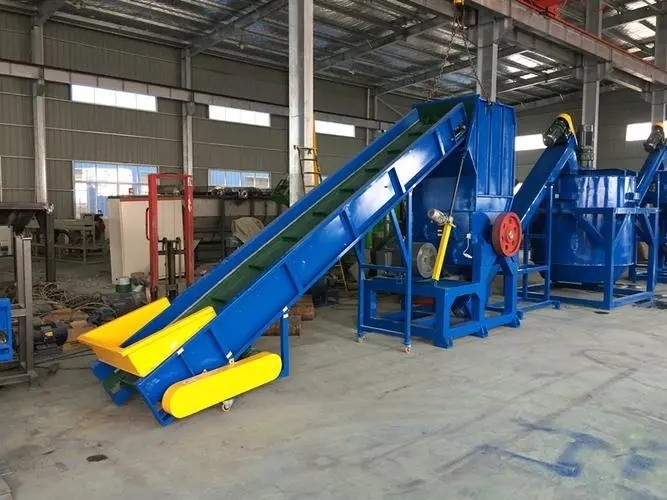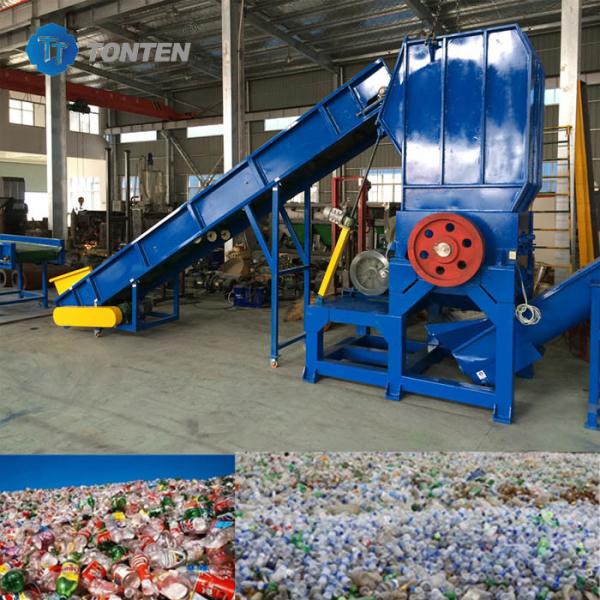| Sign In | Join Free | My frbiz.com |
|
| Sign In | Join Free | My frbiz.com |
|
| Categories | Plastic Crushing Recycling Production Line |
|---|---|
| Brand Name: | TONTEN |
| Model Number: | TTPR-800 |
| Place of Origin: | China |
| MOQ: | 1 Set |
| Payment Terms: | T/T |
| Supply Ability: | 20 Sets per month |
| Delivery Time: | 10-15 work days |
| Packaging Details: | Export wooden packing or container |
| Price: | Negotiable |
| Type: | Waste Plastic Recycle Crusher Line |
| Capacity: | 3000-10000 kg/h |
| Power: | 70kw |
| Water supply: | 5-6m³/h |
| Area Required: | 20x4.5m |
| Raw Material: | Waste Plastic,PE bottle |
| Main machine: | Screening, de-labeling, crushing, cleaning |
| Voltage: | 380v/Customized |
| Company Info. |
| TONTEN MACHINERY LIMITED |
| Verified Supplier |
| View Contact Details |
| Product List |
Waste plastic Recycle Crusher line PET bottle recycling Plant
Plastic Crushing Recycling Production Line Introduce:
Plastic crushing and recycling equipment can handle various plastic
materials with different levels of pollution, including extremely
heavy pollution. It is suitable for recycling waste HDPE bottles,
daily chemical bottles, medium-sized plastic bottles, including
HDPE/LDPE/PP bottles and barrels, etc.
Plastic crushing and recycling equipment mainly consists of
single-shaft crusher/plastic crusher, screw loader, cleaning
machine, label removal machine, vertical dehydrator, dryer and
other equipment. It is suitable for processing various waste
plastics by removing labels, crushing, washing, dehydrating and
drying. The entire production line is easy to operate, has high
efficiency and low energy consumption.
Production Process:
1. The waste and impurities mixed in the plastic bottles are
screened out through the drum screen, and the screened plastic
bottles are transported to the label removal machine through the
drum.
2. Use the de-labeling machine to take off the label paper on the
bottle. The inner shaft of the de-labeling machine is equipped with
an alloy blade that rotates at a certain angle with the main axis
center line and rotates in a spiral. The PET bottle is transported
to the discharge end. The alloy knife peels off the label, and the
built-in nozzle punches the peeled label out of the round hole in
the separation chamber.
3. The plastic bottles after de-labeling are broken twice, first
coarsely and then finely. Waste plastic bottles are crushed using
wet crushing, the crushing system is closed, and there is no dust
discharge during the crushing process. After crushing, the plastic
pieces become irregular pieces. The spray water in the crushing
room is transported to the bleaching tank process along with the
bottle flakes, and no waste water is generated.
4. After crushing, it is connected to the bleaching tank, then to
the hot water tank, then to the friction machine, then to the
washing machine and the bleaching tank, and finally to drying and
temporary storage, which can completely remove impurities in the
bottle flakes. This process mainly adds cleaning wastewater and
waste bottle caps and waste label debris generated from the
bleaching tank.
Product parameters:
Model | Capacity | Installed Power | Water Supply | Manpower | Area Required |
PR-300 | 300 kg/h | 100kw | 4-5 m3/hr | 3-4 Person | 18x4.5x5 |
PR-500 | 500 kg/h | 115kw | 5-6 m3/hr | 4-6 Person | 20x4.5x5 |
PR-1000 | 1000 kg/h | 125kw | 7-8 m3/hr | 8-10 Person | 23x5x5 |
PR-1500 | 1500 kg/h | 180kw | 8-10 m3/hr | 12-14 Person | 23x5x5 |
PR-2000 | 2000 kg/h | 225kw | 10-15 m3/hr | 16-18 Person | 28x5.5x5 |
PR-3000 | 3000kg/h | 330kw | 15-20 m3/hr | 18-20 Person | 30x5.5x5.5 |
Customer site:


|